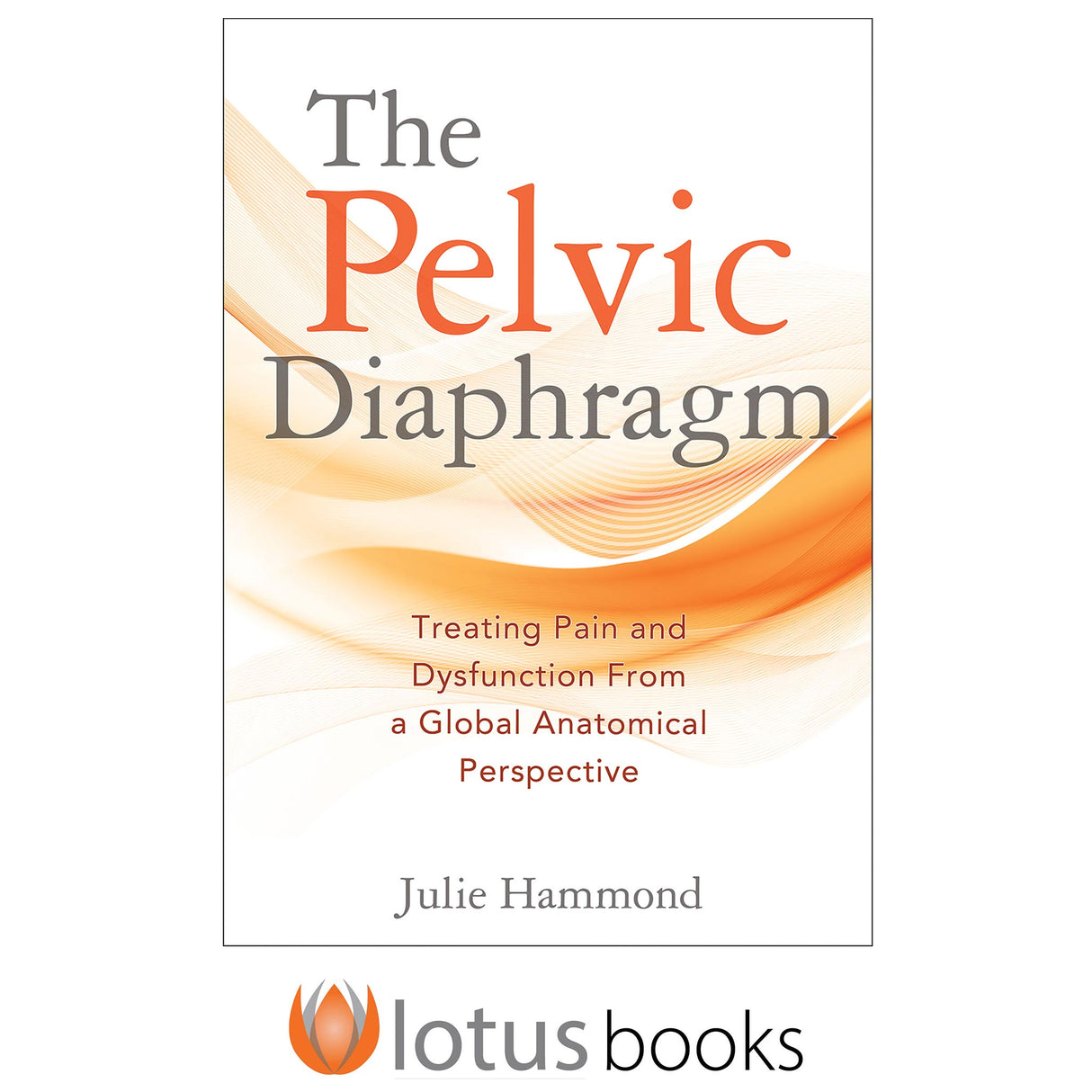The Pelvic Diaphragm
Treating Pain and Dysfunction From a Global Anatomical Perspective
Author: Julie Hammond
This title will be released on January 15, 2026
$29.95 USD
Treat pain and discomfort in the pelvic diaphragm with the latest research.
The Pelvic Diaphragm: Treating Pain and Dysfunction From a Global Anatomical Perspective provides the latest research, fascial release techniques, self-release techniques, and movement practices to treat pain and discomfort in the pelvic diaphragm.
Practitioners will explore an interconnected anatomical perspective, learning how the pelvic diaphragm connects to the respiratory diaphragm, cervical fascia, jaw, and tongue. With over 200 color photos and illustrations, this book provides a comprehensive overview of up-to-date research translated for clinical application.
A fascia-based approach emphasizes fascial connections and continuity throughout the body, enabling therapists to use the body’s natural tension to improve outcomes in pain management and functional restoration. Hands-on fascial release techniques are included, as well as body reading strategies and assessment methods to improve accuracy in treatment planning.
The book includes two chapters authored by experienced practitioners of manual therapy and Pilates. This gives readers the opportunity to see how concepts translate across clinical and movement settings.
With a wealth of information on treatment strategies, The Pelvic Diaphragm offers practitioners a broad understanding of an interconnected anatomical perspective and the ways it can be used to treat each client’s unique situation. Pull back the curtain on the pelvic diaphragm and provide clients with appropriate, effective care.
Audience
Manual therapists, physical therapists, sports medicine practitioners, and movement practitioners serving individuals with pelvic pain and dysfunction. Also a text for upper-undergraduate and graduate students studying human anatomy, occupational therapy, physical therapy, and therapeutic modalities.
Chapter 1. Introduction: The WHY—Zooming Out to Look at the Bigger Picture!
Introduction
My Why
Global vs Local
Understanding Anatomy Gives a Clearer Intention
Touch
Body Reading
How to Use This Book
Equipment Needed
Chapter 2. Fascial Origami: A Complex, Dynamic Structure that Connects, Divides, Adapts, and Supports
Introduction
Classification of Fascia
Fascia
Basic Components of Connective Tissue
Sensory Receptors
Fascia and Hormones
Fascia and Aging
Tensegrity
References
Chapter 3. Bony Pelvis: The Pelvis and Pelvic Diaphragm Are Balanced amongst the Outer Tensegrity
Introduction
The Bony Pelvis
Palpation
The Articulations/Joints
Form and Force Closure
Ligaments
Tri-planar Movement of the Pelvis in Gait
Key Takeaways
References
Chapter 4. Pelvic Diaphragm: It’s Not a Floor, It’s a Multilayered Adaptable, Interconnected Structure
Introduction
Pelvic Diaphragm Functions
The Different Layers of the Pelvic Diaphragm
Pelvic Diaphragm Contraction
Pelvic Diaphragm Layers Experiential
What Can Go Wrong
Posture and the Pelvis
What This Information Means for Clinical Practice
Pelvic Tensegrity
Key Takeaways
Manual Techniques
References
Chapter 5. Connections from Below—the Feet and Legs: Support from the Ground Up
Introduction
Foot Anatomy
Ankle Joints
Extrinsic Muscles
Down the Rabbit Hole—Intrinsic Muscles
Windlass Mechanism
Functional Link
What Does This Mean?
Athletes and Urinary Incontinence
Shock Absorption Mechanisms
Experiential—What Works for You?
Fascial Link
Body Reading the Foot and Lower Leg
Common Postural Problems in the Foot and Limbs
Key Takeaways
Manual Techniques
References
Chapter 6. Respiratory Diaphragm: Your Inner Jelly Fish
Introduction
General Functions
Anatomy of the Respiratory Diaphragm
Down the Rabbit Hole—Phrenic Nerve
Anatomy of the Breath
Structure and Function
Connections
Fascial Layers
Fascial Terms in More Detail
Functional Connection to the Pelvic Diaphragm
Breathing Pattern Dysfunction
Posture and Diaphragm Function
What Does All This Mean in Clinical Practice?
Body Reading the Ribcage and Diaphragm
Common Postural Patterns
Key Takeaways
Manual Techniques
References
Chapter 7. The Thoracolumbar Fascia
Introduction
Anatomy of the Thoracolumbar Fascia
Down the Rabbit Hole—Lumbar Interfascial Triangle
Down the Rabbit Hole—TLF as a Potential Source of Lower Back Pain
What Does This Mean?
Transverse and Vertical Connection between the TLF and Abdominals
Quadratus Lumborum
Key Takeaways
What Does This Mean in Clinical Practice?
Body Reading the TLF
Manual Techniques
References
Chapter 8. The Floor of the Mouth, Larynx, and Jaw
Introduction
Fascial Connection
The Deep Cervical Fascia
Larynx Anatomy
Down the Rabbit Hole—Muscles of the Larynx
The Functional Connection between Pelvic Diaphragm, Respiratory Diaphragm, and Larynx
The Top of the Structure—the Larynx and Glottis
What Does All of This Mean?
The Fascial Breath
The Jaw Connection
Muscles of Mastication
Down the Rabbit Hole—Tongue Anatomy
Body Reading the Head and Neck
Manual Techniques
References
Chapter 9. Self-Myofascial-Release
Fiona Palmer
Introduction
Pelvic Diaphragm—Self-Release
Feet and Lower Limb Connection to the Pelvic Diaphragm
Respiratory Diaphragm Self-Release
Thoracolumbar Fascia Self-Release
Neck and Jaw Self-Release
Key Takeaways
References
Chapter 10. Treating Pelvic Dysfunction with a Global Lens through Pilates: “Stacking Up the Diaphragms”
Sharon Michau
Introduction
The Foot
The Respiratory Diaphragm
Global Movement for Balancing the Diaphragms





 Deep fascia
Deep fascia Female pelvic ligaments
Female pelvic ligaments Manual techniques
Manual techniques Side lying lateral raphe
Side lying lateral raphe